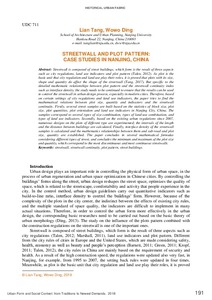STREETWALL AND PLOT PATTERN: CASE STUDIES IN NANJING, CHINA
Скачать файл:
URI (для ссылок/цитирований):
https://elib.sfu-kras.ru/handle/2311/111689Автор:
Lian, Tang
Wowo, Ding
(Lian, T, Wowo, D.: College of Architecture and Urban Planning, Tongji University China, Shanghai, Yangpu District, Rd. Siping No. 1239, 200092 E-mail: xxarchitect@gmail.com)
Дата:
2019-05Proceedings of the XXV ISUF International Conference “Urban Form and Social Context: from Traditions to Newest Demands” (Krasnoyarsk, July 5–9, 2018)
Аннотация:
In Shanghai, over 60 marketplaces have been built upon the fixation lines such as deserted railways, covered rivers, boundary of planned future parks over the last three decades. These markets squeeze resources out of the linear and irregular strips of land, generating new places that are strongly connected to their surrounding neighborhoods.
From the perspective of individual building, fixation line is a linear space with a considerable width to contain a large marketplace over 5000m2, serving more than sixty thousand residents’ daily lives.
Although the building pattern of the marketplace shows clearly of the impact the fixation line, the research reveals that the actual network on site is on the other hand breaking down the pattern from the inside, making the maximum usage of the resources created by these former barriers of the city. The influences of both previous systems that form the fixation line and the current building pattern on site are affecting these linear market places simultaneously, which would bring about possible reflections to both policymakers and architects dealing with urban regeneration projects.

